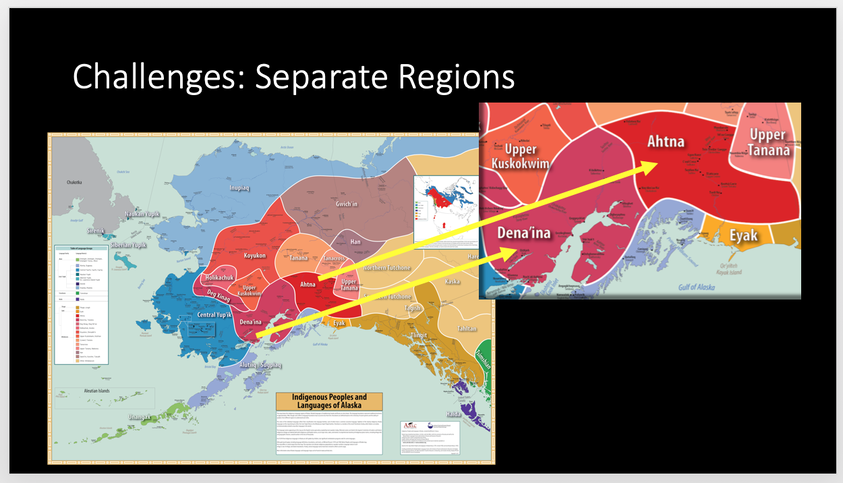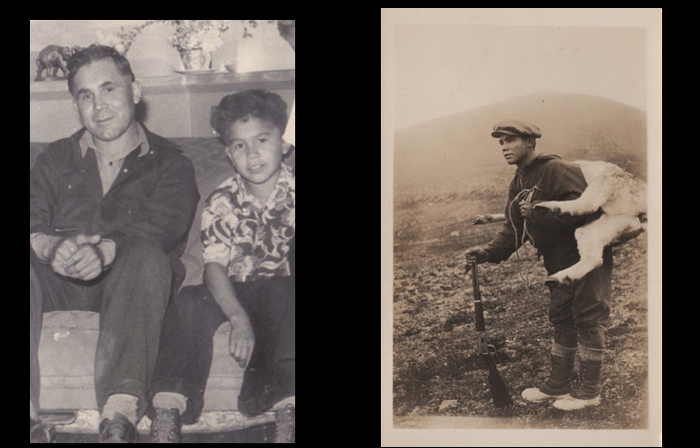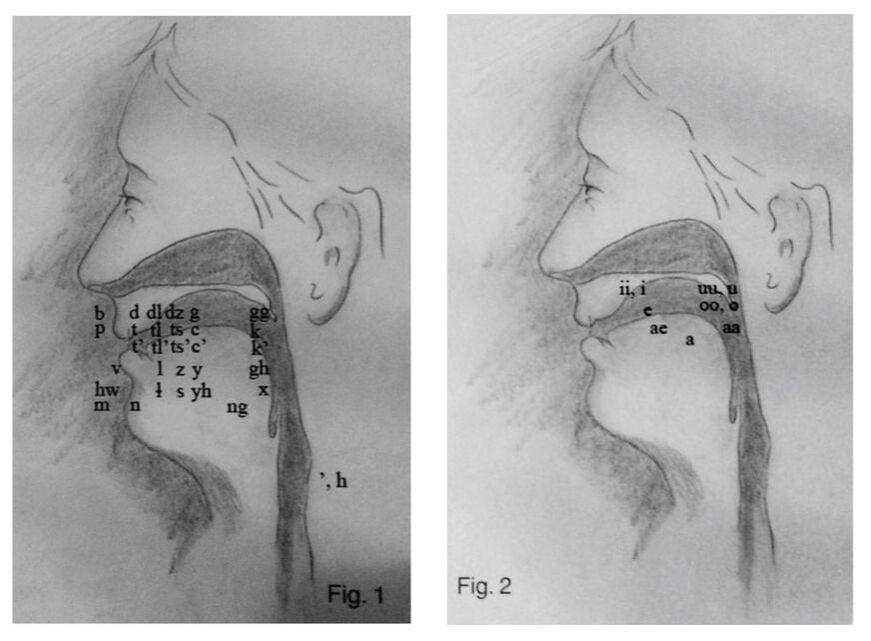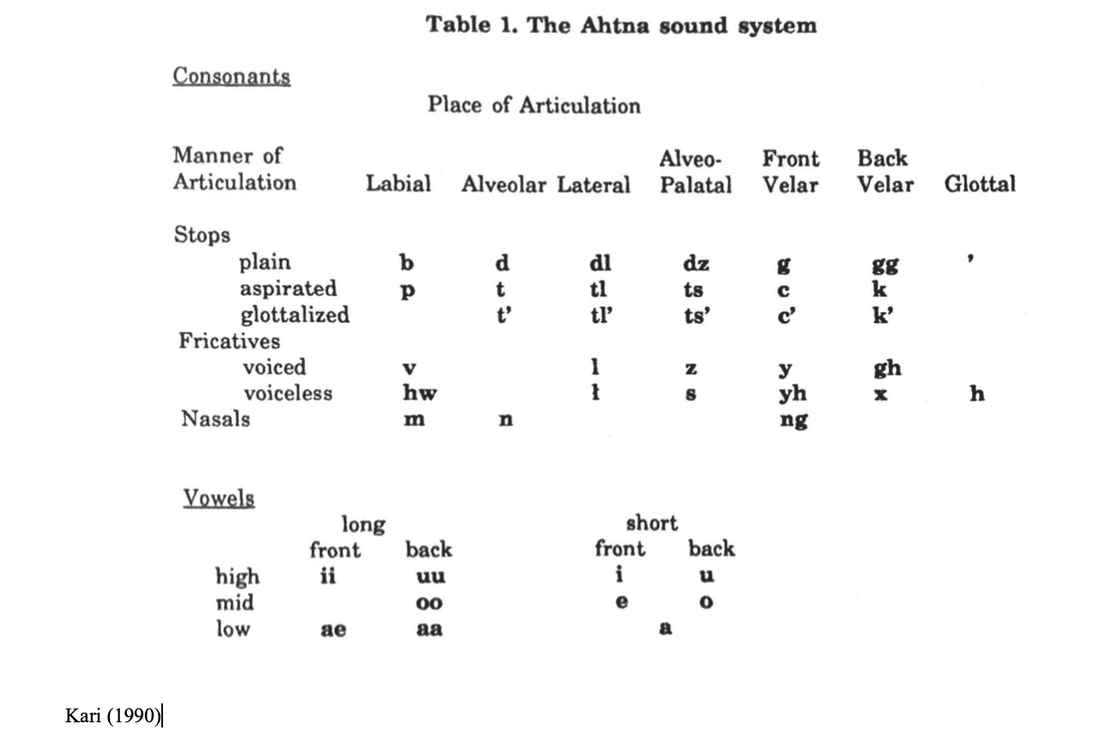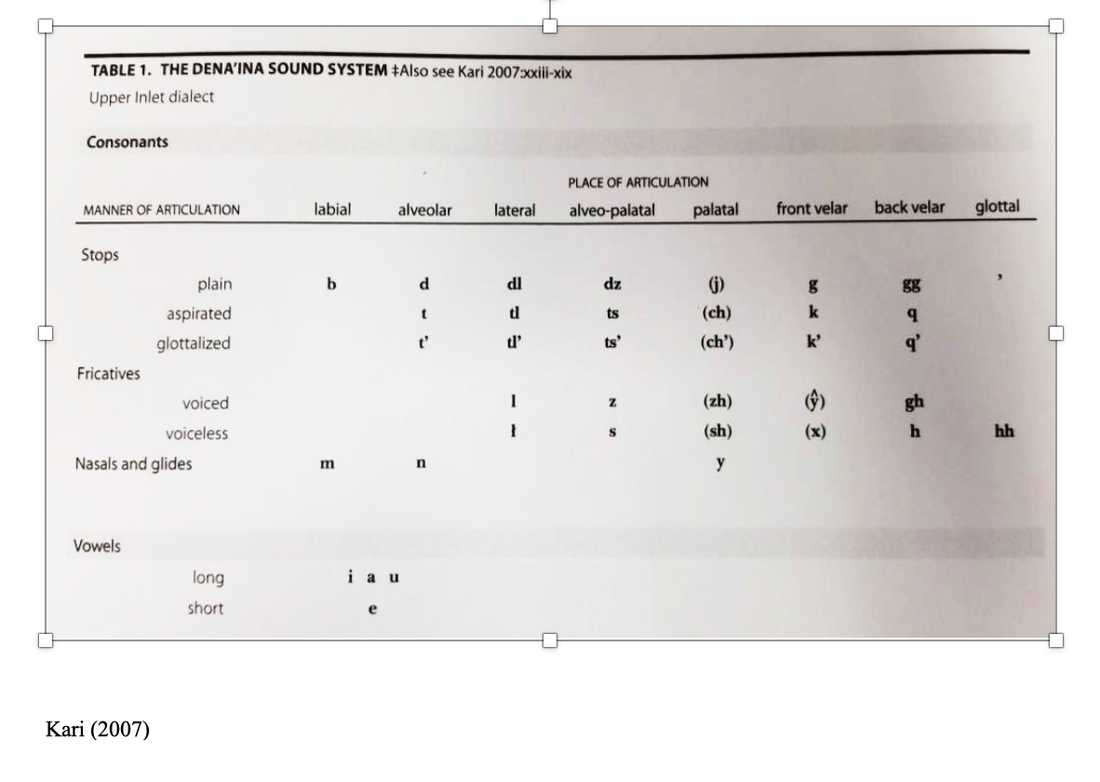Connections between Ahtna and Dena'ina Languages
Traditionally, bilingualism was very common amongst Athabaskan speakers (Kari, 1990). For my grandfather generation, bilingualism was common. He traveled throughout the Western, Central Ahtna and Upper Dena’ina regions hunting and guiding and he could speak Ahtna, Dena’ina and English fluently, which was also a common practice. Kari (1987) states that there were other Ahtna speakers who spoke Dena’ina, due to marriage and travel through Ahtna and Dena’ina country (p. 223).
There were no borders between Ahtna or Dena'ina, only now there are bordered regions, but our languages are reclaiming our travel systems and family connections that brings Ahtna and Dena’ina families together. The language have similar grammar structure, but contain slight difference in the postpositions and inter subject pronouns and other small grammar differences. Both languages have been supporting each other through songs, dances, language gatherings, language institutes and having Master Elders Language Speakers visiting in their Native languages and understanding each other and sharing ideas and laughter. When they visit they do not combine the languages, but they support each other by contributing their knowledge with language learners and support each other through their teaching.
These are reasons I began learning both languages, when I understood that stsiiye (my grandpa), could speak both languages through traveling, hunting and visiting in both regions of Ahtna and Dena’ina countries, this has been documented in the book from Shem Pete’s Alaska and through recording from Dr. James Kari. This was not an uncommon situation in his generation. Our family used to travel by foot, dog sled or boat to reach families. In my grandparents time languages were spoken in Dena'ina, Ahtna, Russian or English. They were not limited to just one language as we are now. In one generation our languages were separated by the land claims of Alaska, which divided our languages and regions into corporations, genocidal education, tuberculosis, and influenza.
There were no borders between Ahtna or Dena'ina, only now there are bordered regions, but our languages are reclaiming our travel systems and family connections that brings Ahtna and Dena’ina families together. The language have similar grammar structure, but contain slight difference in the postpositions and inter subject pronouns and other small grammar differences. Both languages have been supporting each other through songs, dances, language gatherings, language institutes and having Master Elders Language Speakers visiting in their Native languages and understanding each other and sharing ideas and laughter. When they visit they do not combine the languages, but they support each other by contributing their knowledge with language learners and support each other through their teaching.
These are reasons I began learning both languages, when I understood that stsiiye (my grandpa), could speak both languages through traveling, hunting and visiting in both regions of Ahtna and Dena’ina countries, this has been documented in the book from Shem Pete’s Alaska and through recording from Dr. James Kari. This was not an uncommon situation in his generation. Our family used to travel by foot, dog sled or boat to reach families. In my grandparents time languages were spoken in Dena'ina, Ahtna, Russian or English. They were not limited to just one language as we are now. In one generation our languages were separated by the land claims of Alaska, which divided our languages and regions into corporations, genocidal education, tuberculosis, and influenza.
To the left, here is a picture of stsiiye (my grandfather), Johnny Shaginoff with sta’ (my father) James Shaginoff snełyaanen (respectfully raised me), and to the right, stsiiye carrying a dall sheep. There are stories of him carrying meat from the Talkeetna Mountains to Eklutna Village to Gulkana Village by walking and dog sled. Nowadays it is unheard of, with the highway system.
Ahtna and Dena'ina Sound Systems
In figure 1 shows where sounds are made in the mouth beginning with front of the mouth to the back to the trout. Figure 2 demonstrates where the sound of the vowels are made in the mouth. Both figures were illustrated by Dr. Siri Tuttle.
As you can see from both pictures of the figures and the chart below that the sounds of the letters are made from by the lips to the throat and you can see what sounds are vibrating (glottalized) or when there are there stops of aspirations, a pop of air in the sound.
Many of the sound are the same placement except for few letters. The Western region variety has words close to those used by the Upper Dena’ina people, located southeast of the Western Ahtna villages. The letters from the chart demonstrate where the sounds are placed in the month. Both charts illustrates that there are many similarities in the sounds, however it is noted in both Table 1 that the Dena’ina Upper Inlet variety has sounds that are close to Ahtna. These are: dz vs. j, ch vs, ts, ch’v. ts’, s vs. sh. Kari (2003) notes that “Dena’ina Upper Inlet speakers favor the palatal (ch, j) pronunciation.”

